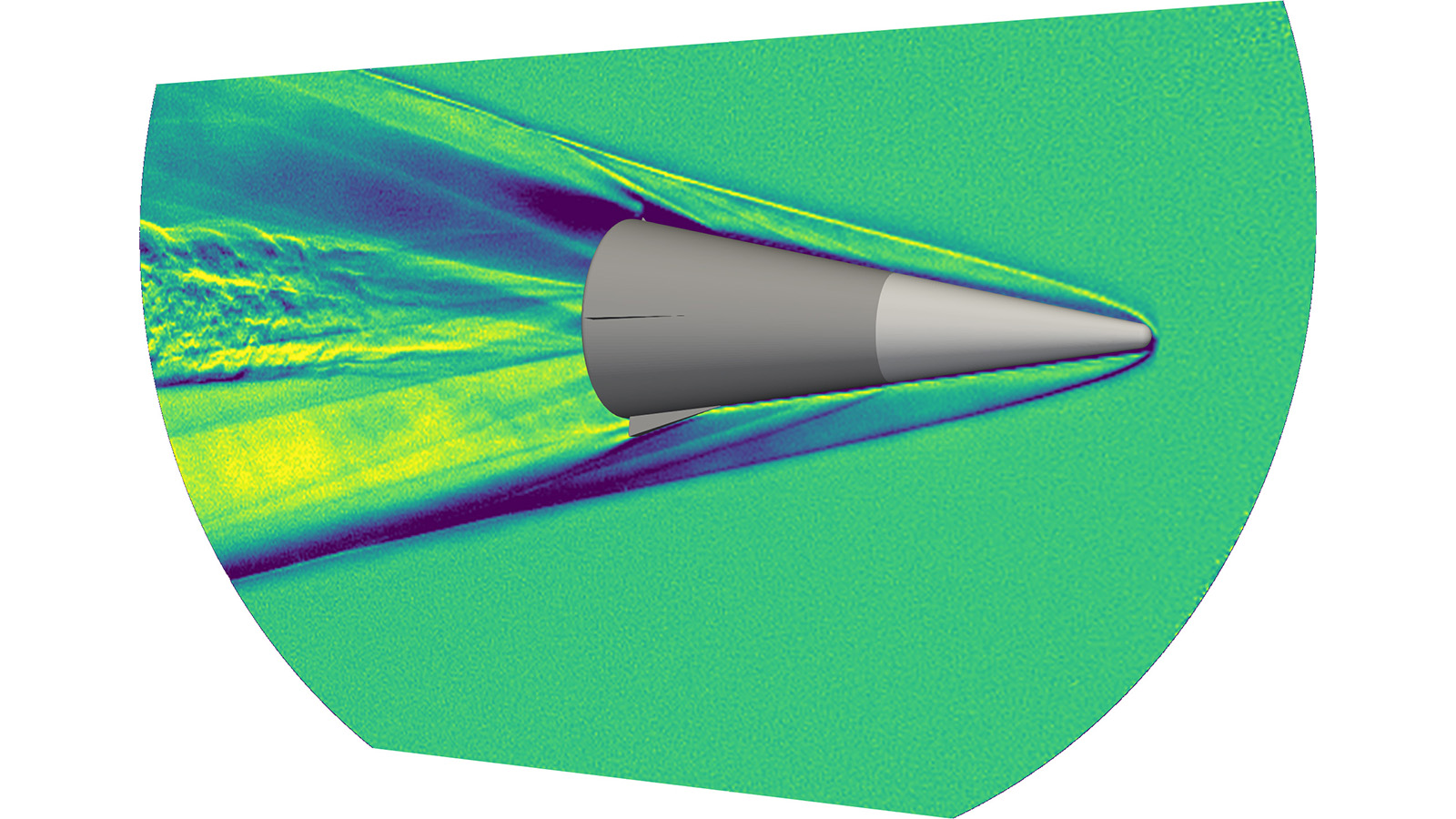Stay Up to Date
Submit your email address to receive the latest industry and Aerospace America news.
The Weapon System Effectiveness Technical Committee advances the science and technology of predicting, measuring, evaluating and improving the lethality of weapon systems.
DARPA and the U.S. Air Force conducted a free flight test of the Hypersonic Air-breathing Weapon Concept in September. Raytheon built a HAWC prototype, and Northrop Grumman built the missile’s scramjet engine. In the test, the HAWC prototype was carried under the wing of an aircraft and released. Seconds later, a solid rocket motor boosted the HAWC prototype to supersonic speed. The scramjet engine then ignited and accelerated the missile, enabling it to reach hypersonic speed, or greater than Mach 5. The air-breathing scramjet engine used hydrocarbon fuel. The test validated the HAWC prototype’s airframe and propulsion system could reach and cruise at hypersonic speeds. The success built on pioneering scramjet projects, including the X-30 National Aero-Space Plane, the uncrewed flights of NASA’s X-43 vehicles and the U.S. Air Force’s X-51 Waverider.
In other hypersonic air-breathing missile news, in March and August, the U.S. Navy put out a solicitation for a Screaming Arrow prototype program to develop an F/A-18E/F Hornet aircraft-compatible air-launched hypersonic cruise missile platform to complement the Conventional Prompt Strike boost glide system.
In conjunction with Australia, the U.S. began the Southern Cross Integrated Flight Research Experiment prototyping program to develop through a preliminary design review a solid rocket-boosted, air-breathing, hypersonic conventional cruise missile. The Air Force issued round-two contract options to Boeing and Lockheed Martin in September. It is a follow-on to the joint Hypersonic International Flight Research Experimentation Program between the U.S. and Australia that conducted flight tests of rocket-launched air-breathing vehicles in Australia.
The U.S. Air Force conducted arena testing of the AGM-183A Air Launched Rapid Response Weapon at Eglin Air Force Base in Florida. However, there were two setbacks during the ARRW’s air launch tests over Point Mugu Sea Range in California. During the first scheduled booster flight test of the ARRW in April, the missile did not complete its launch sequence and remained attached to the B-52H Stratofortress aircraft that was carrying it. In July, the Air Force made a second attempt, and while the missile separated from the B-52, the rocket did not ignite.
The U.S. Army and Navy tested components of the Long Range Hypersonic Weapon as part of the Conventional Prompt Strike program in Utah. In May, the services tested the first-stage solid rocket motor, and in August, they tested the second-stage solid rocket motor. The solid rocket motors also demonstrated a thrust vector control system. The missile is a Navy-designed, Army-produced common hypersonic missile based on the Common Hypersonic Glide Body. The Army plans to field the initial LHRW battery by 2023. The Navy announced that, in addition to the initially planned submarine launch capability, the CPS system will also be outfitted on Zumwalt-class destroyers.
This year saw continued progress in missile defense. The U.S. Missile Defense Agency, in cooperation with the Navy, conducted flight tests of the Aegis Weapon System northwest of Hawaii in July. The objective was to intercept two short-range ballistic missile test targets using two Standard Missile-6 Dual II salvos (totaling four SM-6s). At least one target was intercepted. The SM-6 Dual II missile is designed for use in the terminal phase of a short- to medium-range ballistic missile trajectory. It followed a November 2020 developmental test of the SM-3 Block IIA intercepting an ICBM-class target. These tests open the discussion of the role of naval vessels in a layered homeland defense in support of the Ground-based Midcourse Defense and the terminal defense supplied by the Terminal High Altitude Area Defense interceptor system.
Stay Up to Date
Submit your email address to receive the latest industry and Aerospace America news.




